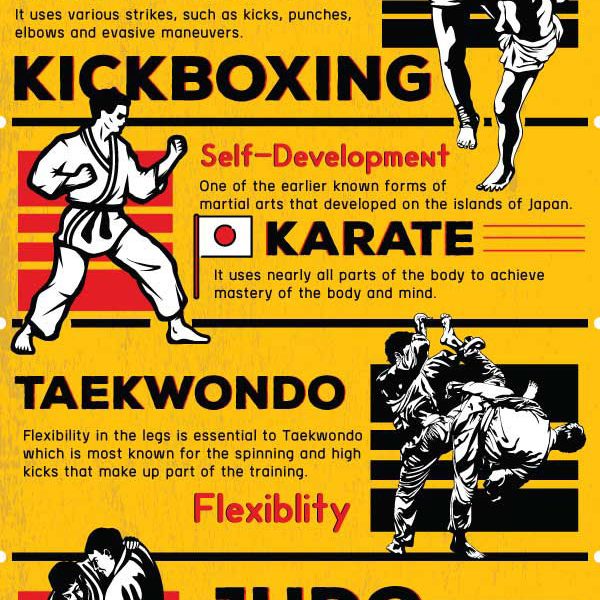The Development And Progression Of Martial Arts: Tracing Its Roots From Ancient Times To Contemporary Practices
The Development And Progression Of Martial Arts: Tracing Its Roots From Ancient Times To Contemporary Practices
Blog Article
Content Writer-Clemons Ayers
Step into the globe of martial arts, where ancient beginnings and modern-day methods collide in a thrilling journey of discipline and self-discovery.
As you explore the history and evolution of this captivating art form, prepare to be captivated by the social impacts, technological developments, and profound ideology that have formed it over centuries.
From the battlegrounds of ancient civilizations to the training premises of today, martial arts have actually stood the test of time, frequently adapting and growing.
Each strike, each activity, brings with it the weight of countless years of practice and wisdom, gave via generations. This is a story of durability, of warriors who looked for not only physical prowess, however also inner strength and consistency.
Join us on this impressive exploration as we reveal the secrets, the legends, and the transformational power of martial arts.
Prepare yourself to be motivated, challenged, and permanently changed by the background and evolution of martial arts.
Social Impacts on Martial Arts
As you explore the background and evolution of martial arts, you'll swiftly discover the fascinating ways in which social impacts have actually shaped these battle methods.
From the old civilizations of China and India to the much more current developments in Japan and Brazil, martial arts have been heavily affected by the cultures in which they originated.
As an example, Chinese martial arts, such as Martial Art and Tai Chi, are deeply rooted in the ideology of Taoism and the idea of Yin and Yang.
In contrast, Japanese martial arts, like Martial arts and Judo, reflect the samurai warrior customs and the values of self-control and honor.
Similarly, Brazilian fighting style, Capoeira, integrates elements of African dance and music, reflecting the social heritage of African servants in Brazil.
These cultural affects not only give each martial art its one-of-a-kind attributes however likewise provide a deeper understanding of the historic and social contexts in which they progressed.
Technical Improvements and Martial Arts
With the increase of innovative weaponry and cutting-edge training tools, you have actually had the ability to boost your skills and adapt to the ever-changing combat landscape.
Technological advancements have transformed the method martial arts are exercised and taught. Virtual reality simulations currently permit you to train in reasonable battle scenarios without the danger of physical harm. High-speed cameras capture every action, enabling you to analyze and best your techniques. Wearable tools monitor your heart price, breathing, and muscular tissue activation, supplying immediate comments on your efficiency.
Additionally, the growth of customized devices, such as resistance bands and dexterity ladders, has actually allowed you to improve your rate, strength, and dexterity. These technological improvements have not just made training a lot more effective yet have additionally pressed the limits of what is feasible in martial arts, permitting you to get to brand-new heights in your practice.
The Viewpoint and Principles of Martial Arts
The viewpoint and concepts of martial arts are deeply rooted in shaping your mindset and instilling discipline, emphasis, and regard in your technique.
1. Way of thinking: Martial Arts teaches you to establish a strong and resistant frame of mind. https://bestfederalcriminaldefens00099.blogsidea.com/36501156/harness-the-knowledge-and-proficiency-of-seasoned-criminal-legislation-professionals-to-reinforce-your-protection-and-make-sure-a-positive-outcome-properly-turning-your-legal-strategy-into-a-powerful-tool enables you to conquer obstacles both on and off the mat, pushing your limitations and persisting despite hardship.
2. Discipline: Martial Arts needs self-control and self-constraint. With regular training and adherence to stringent guidelines and strategies, you learn to manage your impulses and establish a strong work values.
3. Focus: Martial Arts requires intense emphasis and concentration. By training your mind to be present in the minute, you boost your capacity to react promptly and efficiently throughout battle scenarios.
4. Regard: Martial Arts highlights respect for oneself, teachers, educating partners, and challengers. It educates you to value the abilities and experiences of others, promoting a sense of camaraderie and sportsmanship.
Final thought
Congratulations on completing your trip with the fascinating world of martial arts! Throughout this exploration, you have witnessed the rich history and amazing development of these fight techniques.
From their old origins to the contemporary strategies we see today, martial arts have actually been formed by social impacts.
The assimilation of technology has likewise played a considerable role in reinventing the method martial arts are instructed and exercised in the present day.
Nevertheless, it is important to bear in mind that martial arts are greater than simply physical combat. They include extensive viewpoints and leading principles that go beyond the plain act of battling.
Take a minute to assess this obsolete experience and appreciate just how the heritage of martial arts remains to prosper in the present, transcending time and limits.
